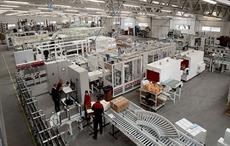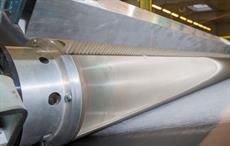Stahl, an advocate of responsible chemistry, has introduced a range of next-generation solutions that enable tanners to produce lightweight automotive leathers without compromising on quality. The lightweight automotive leather delivers weight savings of up to that 30 per cent in a luxury car with a full leather interior, compared with traditional leather.
The new Stahlite range is designed for use in the retanning and fatliquoring stages of the wet-end leather production process and replaces conventional retanning and softening agents with specialty polymers. These polymers penetrate more thoroughly into the leather fibre structure to coat the fibre bundles and fibrils with a smooth layer.Stahl, an advocate of responsible chemistry, has introduced a range of next-generation solutions that enable tanners to produce lightweight automotive leathers without compromising on quality. The lightweight automotive leather delivers weight savings of up to that 30 per cent in a luxury car with a full leather interior, compared with traditional leather.#
The result is a lightweight automotive leather that, compared with traditional leather, delivers weight savings of 7 kg to 8 kg - or up to 30 per cent - in a luxury car with a full leather interior. This reduces the weight premium associated with a traditional leather interior and contributes to reduced fuel consumption in fossil fuel vehicles and extended range in EVs. Lightweight automotive leather also reduces CO2 emissions by 0.4 g/km to 0.5 g/km compared with a conventional leather interior.
Stahlite lightweight leather feels thick, luxurious, and soft, while retaining the durability and long life-expectancy automotive manufacturers and their customers expect. Leather made with Stahlite maintains good grain tightness, while the stability and tear strength are the same as standard leather. Leather made with Stahlite also withstands the effects of heat and oxidation better than a traditionally retanned and fatliquored leather, and it is extremely low-odour and low-VOC as well.
With the Stahlite range, tanners can shorten their retanning time by up to 40 per cent compared with the traditional process. The exact gains depend on the raw material and the final article to be produced. Stahlite also has a lower impact on the environment. Along with fewer chemicals, it requires less water and energy to produce leather made with Stahlite, and using Stahlite creates less wastewater. In concrete terms, the Stahlite range can reduce COD by up to 40-50 per cent and reduce BOD5 by 60-70 per cent in like-for-like comparisons.
The Stahlite range is part of Stahl’s Stahl Neo portfolio of low-impact leather chemicals and complies with the Zero Discharge of Hazardous Chemicals (ZDHC) Manufacturing Restricted Substance List (MRSL).
Fibre2Fashion News Desk (SV)


